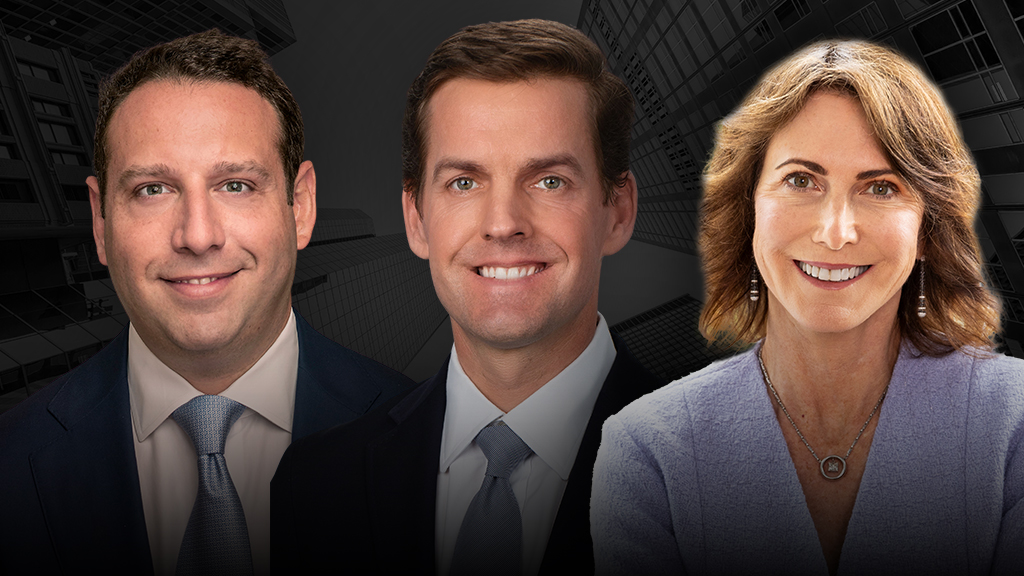Aaron Appel, Kris Mikkelsen, and Ivy Zelman
Senior Managing Director, Capital Markets | EVP and co-head of Investment Sales and Real Estate Finance | Executive Vice President, Research and Securities
In a recent Walker Webcast, I welcomed three of my sharpest colleagues—Aaron Appel, Senior Managing Director of Capital Markets, Kris Mikkelsen, Executive Vice President of Investment Sales & Real Estate Finance, and Ivy Zelman, Executive Vice President of Research and Securities—for a deep dive into where we stand in early 2025 across commercial real estate, housing, capital markets, and policy.
From single-family housing to multifamily absorption and capital liquidity, this conversation captured the complexity of today’s market—and the conviction that's beginning to return.
Liquidity is back—but discipline matters
Aaron Appel set the tone with a clear message: capital markets are strong. Spreads have tightened across public and private credit, and even major banks are back in the game after a multiyear hiatus. Surprisingly, securitized markets have come out swinging in Q1, with robust demand for bonds driving spreads even lower.
Still, investors are staying selective. As Aaron put it, “Basis is everything.” That focus on replacement cost and future rent growth allows buyers to accept slightly negative leverage today with confidence in upside down the road. The appetite is there, but it's disciplined.
Multifamily absorption defies the odds
Kris Mikkelsen walked us through the multifamily math, and it’s striking. Despite record deliveries in 2024, the U.S. is on track to absorb 667,000 units, more than double the pace from the pre-pandemic years. This absorption is being fueled by the deterioration in housing affordability—where a 76 percent spike in mortgage costs has made renting the far more viable option.
Here’s the catch: Deliveries peaked in 2024, but starts have dropped sharply. This sets up a likely undersupply scenario by 2026–2027, with implications for rent growth and asset performance. As Kris noted, “We’re halfway through the second loop of an infinity symbol,” signaling where this cycle may head next.
Housing affordability hits a wall
Ivy Zelman brought deep insight into the consumer side of housing, and it’s clear that affordability is stretched to the breaking point. The average monthly mortgage on a median home has jumped from $1,200 in 2020 to over $2,200 in 2025, flipping the rent vs. own equation. “You’re better off renting than owning,” she said bluntly.
Tariffs could only worsen the cost pressures. Builders are projecting a 4–6 percent increase in construction costs from the latest round of tariffs, and with consumer demand softening, they’re struggling to pass those costs along. Rate buy-downs—once a tool to bridge affordability—are becoming too expensive to sustain, with some builders spending 13 percent of the sale price on incentives.
Florida isn’t immune—but South Florida is resilient
Aaron and Ivy both noted the regional divergence in markets like Florida. While South Florida remains supply-constrained and supported by wealth migration, markets like Jacksonville and Tampa are feeling the pressure, with free rent concessions and pricing softness becoming more common.
Still, institutional capital continues to flood into Florida. As Kris pointed out, “We’ve run some of our most competitive processes in the state this year.” The long-term belief in Florida’s fundamentals is strong, even amid short-term bumps.
Office shows signs of life
After years as the industry’s “punching bag,” the office market is finally stabilizing, at least for Class A properties in key metros. Aaron was unequivocal: “We’ve turned the corner.” Trophy assets in supply-constrained markets like Manhattan and Century City are seeing increased leasing and even financing interest. That said, obsolete buildings in tertiary locations remain challenged.
Eyes on deregulation and policy tailwinds
With new leadership at the FHFA and conversations around energy codes and bank capital requirements gaining traction, deregulatory signals are emerging. Ivy highlighted optimism from builders around the potential rollback of environmental constraints. At the same time, Kris flagged the potential macro impact of tweaking supplementary leverage ratios—a move that could push the 10-year Treasury yield down 30 to 50 basis points.
Want more?
As host of the Walker Webcast, I have the privilege to converse with fascinating people like Aaron Appel, Kris Mikkelsen, and Ivy Zelman every week. Subscribe to the Walker Webcast to see our upcoming guests.
Related Walker Webcasts
Navigating the Complex Housing Market with Stephen Scherr
Learn More
October 22, 2025
Finance & Economy
The Most Insightful Hour in CRE Part 23 with Dr. Peter Linneman
Learn More
October 8, 2025
Finance & Economy
Is the Market Recalibrating? with Ivy Zelman
Learn More
August 20, 2025
Finance & Economy
Insights
Check out the latest relevant content from W&D
News & Events
Find out what we're doing by regulary visiting our News & Events pages
